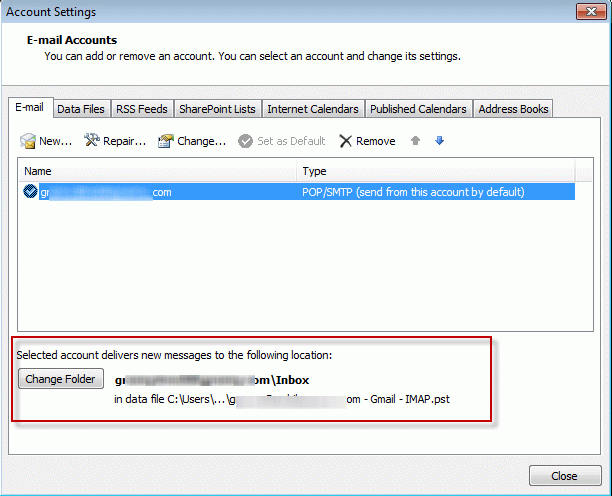

- OUTLOOK 2016 FOR MAC DATA FILE LOCATION FOR FREE
- OUTLOOK 2016 FOR MAC DATA FILE LOCATION HOW TO
- OUTLOOK 2016 FOR MAC DATA FILE LOCATION WINDOWS
Follow a short (and slightly out-dated) step-by-step guide here.
OUTLOOK 2016 FOR MAC DATA FILE LOCATION FOR FREE
You can create your own certificate in about 2 minutes for free directly from OS X's Keychain Access utility. In order to re-sign Outlook with our own code-signing certificate, we first need to create one. If you use Outlook with several accounts (like me) and you don't like the idea of typing all the passwords every time you startup Outlook, continue reading. If you have just one account or if you don't store your IMAP credentials in OS X's keychain at all, that does not have to bother you. However, we've also corrupted the app's signature in the process and that brings some consequences - specifically the fact that Outlook now cannot access keychain. Ok, so we now have Outlook running un-sanboxed. Why isn't creating a symlink enough? Because sandboxed applications are allowed to access only pre-defined folders (Group Containers) and OS will not let them exit these folders using workarounds like symlinks. However, I recommend you to keep reading after the notes!įirst 4 steps will need to be repeated every time Outlook's binary gets replaced during an update. ^^ New location (on the Volume you're moving the folder to)Ĭongratulations, you've successfully moved your Outlook Profile folder away from the default location. When done, the source and destination folders should look like this:

Ln -s "/Volumes/TarDisk/Outlook" "/Users//Library/Group Containers/UBF8T346G9.Office/Outlook" To do that, modify and run following command from Terminal: Step 7: In place of the original folder, create a symbolic link called Outlook pointing to the new destination. Users//Library/Group Containers/UBF8T346G9.Office/Outlook Step 6: Close Outlook and move following folder to its new location: Step 5: Launch Outlook and check in Activity Monitor that Outlook is now running un-sandboxed Step 4: Copy the modified binary back to the Outlook.app bundle (keeping a backup copy of unmodified binary is highly recommended) Using incomplete flag is much better thank using 1 more letter than the original string used. The reason is that when changing text strings inside compiled binaries, replacing a string with another one that is longer than the original is asking for trouble. You might be asking why are we changing the value to and not.
OUTLOOK 2016 FOR MAC DATA FILE LOCATION HOW TO
The following step-by-step guide explains in great detail how to manually reach our goal. Luckily, there is a way to move the Outlook Profile folder away to a different Volume (e.g. a moderately fast SDXD card adapter like TarDisk). That can be troublesome if you have a huge mailbox and not so big SSD in your Macbook.
OUTLOOK 2016 FOR MAC DATA FILE LOCATION WINDOWS
To add insult to injury, Outlook for Mac does not have the "Mail to keep offline" feature of its Windows counterpart, which allows to select time range of e-mails to keep cached locally. Sandboxing apps that don't need access to the whole file system is certainly a step in the right direction, however in this case it also brings an inconvenient limitation to the Outlook 2016 - it is no longer possible to easily move Profile (previously called Identity) to a new location (e.g. Office 2016 implemented several new OS X's APIs, including Sandboxing (mandatory for Mac App Store apps, which Office isn't). True to Microsoft's claims, the latest bundle of productivity apps is indeed "Unmistakably Office, designed for Mac.".


 0 kommentar(er)
0 kommentar(er)
